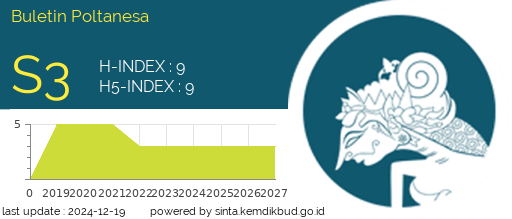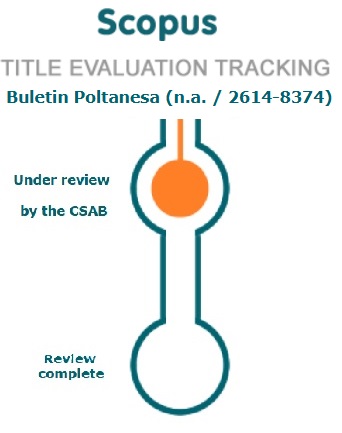Segmentasi Lemak Visceral dan Kanker Paru-paru Menggunakan Deep Learning
DOI:
https://doi.org/10.51967/tanesa.v23i2.1354Keywords:
Segmentasi, Deep Learning, Lemak Perut, Kanker Paru-paruAbstract
Lemak Visceral memberikan dampak yang sangat besar terhadap beberapa penyakit dan salah satunya Kanker paru-paru penyebab utama kematian, Kondisi ini memberikan pengaruh besar dalam dunia kesehatan terhadap permasalahan Lemak visceral dan kanker paru-paru Computer vision menghembalangkan penelitian dari permasalahan yang besar ini computer vision ingin melihat keakuratan penelitian, dengan dataset yang telah di tentukan dengan ini peneliti menggunakan metode deep learning dan di dukung dengan metode Segmentasi-CNN, Segmentation & VFI Calculation. Metode tersebut mampu menampilkan gambar yang tersegmentasi dengan detail dari mengubah warna satu dimensi dan dua dimensi sehingga akan memberikan keakuratan segmentasi, lemak yang telah tersegmentasi daerah gambar lemak dan garis tepinya pada Lemak visceral dan kanker paru-paru memisahkan lemak dan kanker dengan jumlah pixel putih lemak lemah dengan ration area akurat dan Memiliki pixel yang tinggi dan tepat dalam pemrosesan pixel.
References
Anamisa, D. R. (2015). Aplikasi Segmentasi Objek Menggunakan Cellular Neural Network ( Cnn ). Networking Engineering Research Operation, 1(3), 157–163. https://nero.trunojoyo.ac.id/index.php/nero/article/view/40
CARLETTI, M., CRISTANI, M., CAVEDON, V., MILANESE, C., ZANCANARO, C., & GIACHETTI, A. (2018). Estimating Body Fat from Depth Images: Hand-Crafted Features vs Convolutional Neural Networks. 201–206. https://doi.org/10.15221/18.201
Coudray, N., Ocampo, P. S., Sakellaropoulos, T., Narula, N., Snuderl, M., Fenyö, D., Moreira, A. L., Razavian, N., & Tsirigos, A. (2018). Classification and mutation prediction from non–small cell lung cancer histopathology images using deep learning. Nature Medicine, 24(10), 1559–1567. https://doi.org/10.1038/s41591-018-0177-5
Ghatas, M. P., Lester, R. M., Khan, M. R., & Gorgey, A. S. (2018). Semi-automated segmentation of magnetic resonance images for thigh skeletal muscle and fat using threshold technique after spinal cord injury. Neural Regeneration Research, 13(10), 1787–1795. https://doi.org/10.4103/1673-5374.238623
Grainger, A. T., Krishnaraj, A., Quinones, M. H., Tustison, N. J., Epstein, S., Fuller, D., Jha, A., Allman, K. L., & Shi, W. (2021). Deep Learning-based Quantification of Abdominal Subcutaneous and Visceral Fat Volume on CT Images. Academic Radiology, 28(11), 1481–1487. https://doi.org/10.1016/j.acra.2020.07.010
Kumaseh, M. R., Latumakulita, L., Nainggolan, N., Kunci, K., Ikan, M., & Segmentasi, C. (n.d.). METODEambang batas.
Lin, C. (2015). Teknik penekanan lemak dalam pencitraan resonansi magnetik payudara : perbandingan kritis dan seni. 37–49.
Liu, X., Li, K. W., Yang, R., & Geng, L. S. (2021). Review of Deep Learning Based Automatic Segmentation for Lung Cancer Radiotherapy. Frontiers in Oncology, 11, 1–16. https://doi.org/10.3389/fonc.2021.717039
Minami, S., Ihara, S., Tanaka, T., & Komuta, K. (2020). Artikel asli Sarkopenia dan Adipositas Visceral Tidak Mempengaruhi Khasiat Pasien Dengan Kanker Paru Non-Small Cell Lanjutan. 11(1), 9–22.
Moitra, D., & Kr. Mandal, R. (2020). Classification of non-small cell lung cancer using one-dimensional convolutional neural network. Expert Systems with Applications, 159, 113564. https://doi.org/10.1016/j.eswa.2020.113564
Nattenmüller, J., Wochner, R., Muley, T., Steins, M., Teucher, B., Wiskemann, J., Kauczor, H., Oliver, M., Toraks, D. O., & Heidelberg, U. (2017). Dampak Prognostik Distribusi Otot dan Lemak yang Diukur CT sebelum dan sesudah Kemoterapi Lini Pertama pada Pasien Kanker Paru Abstrak pengantar. 1–18. https://doi.org/10.1371/jurnal.pon.0169136
Nault, J. C., Pigneur, F., Nelson, A. C., Costentin, C., Tselikas, L., Katsahian, S., Diao, G., Laurent, A., Mallat, A., Duvoux, C., Luciani, A., & Decaens, T. (2015). Visceral fat area predicts survival in patients with advanced hepatocellular carcinoma treated with tyrosine kinase inhibitors. Digestive and Liver Disease, 47(10), 869–876. https://doi.org/10.1016/j.dld.2015.07.001
Orgiu, S., Lafortuna, C. L., Rastelli, F., Cadioli, M., Falini, A., & Rizzo, G. (2016). Automatic muscle and fat segmentation in the thigh from T1-Weighted MRI. Journal of Magnetic Resonance Imaging, 43(3), 601–610. https://doi.org/10.1002/jmri.25031
Pengenal, A. T. G., Tustison, N. J., Qing, K., Roy, R., Berr, S. S., Shi, W. Bin, Biokimia, D., Molekuler, G., Medis, P., Virginia, U., & Serikat, A. (2018). Kuantifikasi lemak perut berbasis pembelajaran mendalam pada gambar resonansi magnetik Abstrak. September, 1–16.
Strand, R., Malmberg, F., Johansson, L., Lind, L., Sundbom, M., Ahlström, H., & Kullberg, J. (2017). A concept for holistic whole body MRI data analysis, Imiomics. PLoS ONE, 12(2), 1–17. https://doi.org/10.1371/journal.pone.0169966
Syari, F. R., Hendrianingtyas, M., & Retnoningrum, D. (2019). Hubungan Lingkar Pinggang Dan Visceral Fat Dengan. 8(2), 701–712.
Wang, Y., Qiu, Y., Thai, T., Moore, K., Liu, H., & Zheng, B. (2017a). A two-step convolutional neural network based computer-aided detection scheme for automatically segmenting adipose tissue volume depicting on CT images. Computer Methods and Programs in Biomedicine, 144, 97–104. https://doi.org/10.1016/j.cmpb.2017.03.017
Wang, Y., Qiu, Y., Thai, T., Moore, K., Liu, H., & Zheng, B. (2017b). Applying a deep learning based CAD scheme to segment and quantify visceral and subcutaneous fat areas from CT images. Medical Imaging 2017: Computer-Aided Diagnosis, 10134, 101343G. https://doi.org/10.1117/12.2250360
Wang, Z., Meng, Y., Weng, F., Chen, Y., Lu, F., Liu, X., Hou, M., & Zhang, J. (2020). An Effective CNN Method for Fully Automated Segmenting Subcutaneous and Visceral Adipose Tissue on CT Scans. Annals of Biomedical Engineering, 48(1), 312–328. https://doi.org/10.1007/s10439-019-02349-3
Xu, Y., Hosny, A., Zeleznik, R., Parmar, C., Coroller, T., Franco, I., Mak, R. H., & Aerts, H. J. W. L. (2019). Deep learning predicts lung cancer treatment response from serial medical imaging. Clinical Cancer Research, 25(11), 3266–3275. https://doi.org/10.1158/1078-0432.CCR-18-2495
Downloads
Published
How to Cite
Issue
Section
License
The copyright of this article is transferred to Buletin Poltanesa and Politeknik Pertanian Negeri Samarinda, when the article is accepted for publication. the authors transfer all and all rights into and to paper including but not limited to all copyrights in the Buletin Poltanesa. The author represents and warrants that the original is the original and that he/she is the author of this paper unless the material is clearly identified as the original source, with notification of the permission of the copyright owner if necessary.
A Copyright permission is obtained for material published elsewhere and who require permission for this reproduction. Furthermore, I / We hereby transfer the unlimited publication rights of the above paper to Poltanesa. Copyright transfer includes exclusive rights to reproduce and distribute articles, including reprints, translations, photographic reproductions, microforms, electronic forms (offline, online), or other similar reproductions.
The author's mark is appropriate for and accepts responsibility for releasing this material on behalf of any and all coauthor. This Agreement shall be signed by at least one author who has obtained the consent of the co-author (s) if applicable. After the submission of this agreement is signed by the author concerned, the amendment of the author or in the order of the author listed shall not be accepted.









